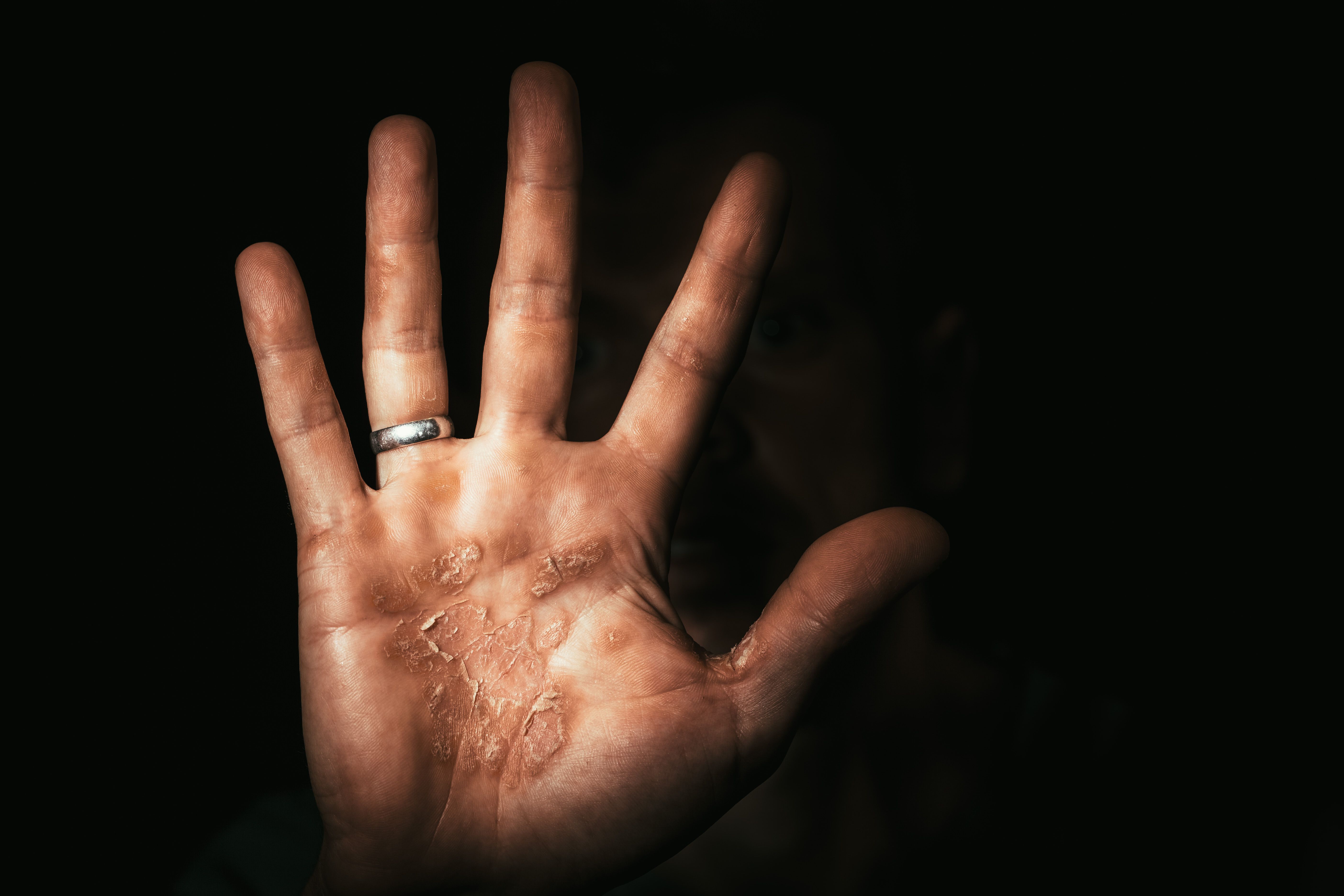News
Article
Black, Male Children Have Increased Risk of Palmoplantar Psoriasis, Study Finds
Author(s):
Compared with White patients, Black male patients had a higher prevalence of palmoplantar psoriasis, according to one study.
When examining risk factors associated with palmoplantar psoriasis (PP), Black and male patients were found to be at greater risk of PP compared with White patients.
dark hand of a worker with b calluses protests. Stop | Image Credit:vovan - stock.adobe.com

Despite psoriasis being a common condition, there is little research regarding the clinical characteristics of this condition in children with PP.
“To address this research gap, a retrospective review chart was conducted to examine PP prevalence and clinical considerations among different racial and ethnic pediatric groups,” wrote the researchers of the study.
This descriptive analysis study is published in Pediatric Dermatology.
PP is a condition that may manifest itself as palmoplantar plaque psoriasis, palmoplantar pustulosis, or acrodermatitis continua of Hallopeau (localized to distal fingers and toes). The condition is characterized by lesions often having scaling, fissuring, and bleeding, resulting in an overall lower quality of life among these patients.
The researchers of the study retrospectively analyzed charts from a single academic dermatology clinic from 2012 to 2022. A total of 373 children aged 0 to 18 years with a primary diagnosis of psoriasis were included. Forty-three charts were excluded based on incorrect diagnosis, patient age, or missing data, resulting in 330 charts for analysis. Of these charts, 50 cases of PP were identified based on the assessments of pediatric dermatology providers.
In addition to the statistical analysis, a regression analysis was performed, in which patients were grouped by psoriasis vulgaris or PP and if they were White or Black.
Of these patients, 236 were White; 62, Black; 26, Hispanic/Latino; and 6, other race/ethnicity, with 59.1% majority being female patients. Black patients had the youngest mean (SD) age of 8.21 (4.41) years (P = .001) compared with other racial groups. Additionally Black patients had a higher diagnosis of PP (41.9%) compared with Hispanic/Latino (11.5%) and White (8.9%) patients (P < .0001).
Furthermore, Black (53.2%) and Hispanic/Latino (50%) patients had significantly more documented nail involvement compared with White (33.9%) patients (P = .02). Black patients also had more psoriatic involvement in their palms and soles (both P < .0001), whereas White patients had more frequent involvement of the scalp (P = .04).
Black patients also had a significantly higher chance of PP than White patients when controlling for sex (adjusted odds ratio [aOR], 1.116; 95% CI, 0.27-4.59; P = .88) and age (aOR, 2.24; 95% CI, 1.13-4.50; P = .02). Furthermore, multivariable logistical regression showed Black patients had significantly increased odds of having PP (aOR, 6.37; 95% CI, 3.20-12.90; P < .0001) compared with White patients.
The researchers acknowledged some limitations to their study findings, including a relatively small sample size and a few missing data points. Despite these limitations, the researchers believe the study brings clinical awareness to identifying patients who may be at the highest risk of PP, in which early diagnosis may improve health-related quality of life for Black male patients who have the highest prevalence of this condition.
“Further research is warranted to better understand the degree to which these associations are affected by racial disparities and environmental factors,” wrote the researchers. "There may also be a unique genetic association with Black or male patients and the PP subtype.”
References
Roman B, Collette S, Smith AM, Theos A. Black and male children have an increased risk of palmoplantar psoriasis compared to white children. Pediatric Dermatology. Published online September 23, 2023. doi:10.1111/pde.15429





